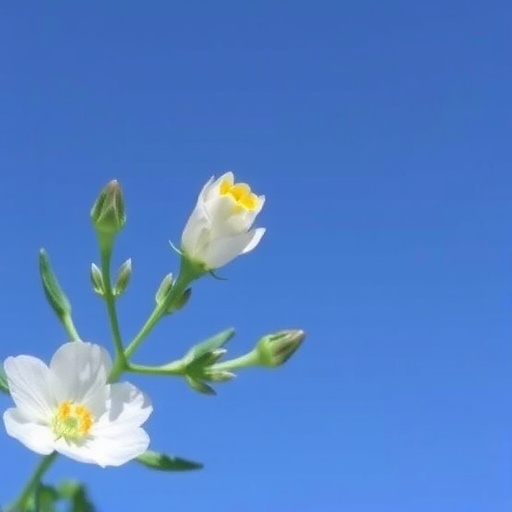In a groundbreaking study, researchers have turned their attention to the fascinating world of native plants found in Brazil’s unique Campo Rupestre ecosystem. Published in the highly-regarded journal Sci Nat, this research explores the intricate structures and mechanisms that allow these hardy species, particularly from the Melastomataceae family, to thrive despite the pervasive presence of aluminum in their environment. Aluminum toxicity in plants is a pressing ecological concern, especially in regions where soil chemistry presents challenges to growth and viability.
The Campo Rupestre, a distinctive rocky savanna, boasts an array of plant species uniquely adapted to its conditions. Studies indicate that soils in this region often contain high concentrations of aluminum, which can be detrimental to plant health. However, certain species, particularly those within the Melastomataceae family, exhibit remarkable resilience. This study investigates these plants’ physiological and biochemical responses to aluminum exposure, aiming to uncover their strategies for detoxification and the accumulation of harmful elements.
Central to the study’s findings is the revelation of specific accumulation sites for aluminum within the plants. Researchers utilized advanced imaging techniques to visualize how aluminum allocates itself within the plant tissues. This allows for a better understanding of which parts of the plant are most susceptible to aluminum stress and how the plants manage to compartmentalize the metal to mitigate its toxic effects. Through in-depth analysis, it was found that not only do these plants accumulate aluminum, but they also employ a range of detoxification mechanisms that appear to illustrate a sophisticated evolutionary strategy for survival.
In conjunction with identifying accumulation sites, the researchers meticulously examined the plant’s biochemical pathways involved in detoxification. They highlighted that certain metabolites play a pivotal role in binding aluminum, rendering it less harmful and facilitating its eventual removal from the plant’s tissues. This biochemical dance is fascinating, showcasing the complexities of plant adaptation and evolution in response to environmental stressors. With these insights, researchers aim to contribute to the broader field of phytoremediation, utilizing natural systems to alleviate heavy metal pollution in soil and water.
The implications of this research extend far beyond the Campo Rupestre itself. As global industrial activities increase aluminum emissions, understanding how native plants cope with such environmental stressors could lead to innovative strategies for ecosystem management and restoration. These findings can provide essential information for conservation efforts aimed at preserving biodiversity in habitats where heavy metals pose a risk to plant populations and the broader ecological network.
In addition to ecological implications, the research holds potential implications for agriculture and horticulture. By understanding the mechanisms of aluminum tolerance in native plants, researchers might identify traits that could be beneficial in crop development. This is particularly crucial in areas where aluminum toxicity limits agricultural productivity, presenting an opportunity for breeding programs to enhance resilience and adaptability in economically significant crops.
The study emphasizes the urgent need for comprehensive research into native plant mechanisms under stress. With the increasing threat posed by climate change and industrial pollution, preserving the genetic diversity of plant species like those in the Campo Rupestre could offer essential tools in combating crop failures and ecological degradation. Through continued investigation into their survival strategies, the prospects for sustainable agriculture may be significantly enhanced.
To summarize, this research is pioneering not only in its examination of a specific plant family but also in its implications for broader environmental management and agricultural practices. It sheds light on the remarkable adaptability of life and the potential for natural systems to inform human-driven solutions to pressing environmental challenges. Such studies remind us of the intricate relationships between species and their habitats and the importance of conserving natural ecosystems that hold the key to resilience in the face of adversity.
Furthermore, the research urges the scientific community, conservationists, and policymakers to take note of the ecological significance of native flora, such as the Melastomataceae in the Campo Rupestre, and the potential insights they offer for combating soil and water contamination. The study not only highlights a unique ecosystem but also opens the door for future interdisciplinary research that bridges botany, ecology, and environmental science.
As the scientific community continues to grapple with the effects of heavy metals on plant health, this research stands out in offering empirical evidence for the detoxification processes and accumulation sites of aluminum in specific native plants. The lessons learned from the Melastomataceae could provide a framework for ecological studies in similar environments worldwide. It promotes a renewed understanding of the resilience of nature and its capacity to heal and adapt, emphasizing the importance of studying and protecting our planet’s unique ecosystems.
In essence, the story of the Campo Rupestre and its native plants exemplifies the broader narrative of survival and adaptation in the natural world. As we face unprecedented environmental challenges, looking towards nature for solutions may provide untapped opportunities for innovation and resilience. This study thus serves as a beacon of hope and a call to arms for ongoing exploration, appreciation, and conservation of our planet’s diverse ecosystems.
Subject of Research: The mechanisms of aluminum accumulation and detoxification in native plants from the Campo Rupestre ecosystem.
Article Title: Aluminum in native plants from the Campo Rupestre: Investigating accumulation sites and detoxification mechanisms in Melastomataceae.
Article References:
Santana-Tomaz, J., Arcelino Resende, M., de Sousa Côrtes, H. et al. Aluminum in native plants from the Campo Rupestre: Investigating accumulation sites and detoxification mechanisms in Melastomataceae.
Sci Nat 112, 88 (2025). https://doi.org/10.1007/s00114-025-02042-7
Image Credits: AI Generated
DOI:
Keywords: Aluminum toxicity, Melastomataceae, Campo Rupestre, phytoremediation, ecological resilience, detoxification mechanisms, native plants.




